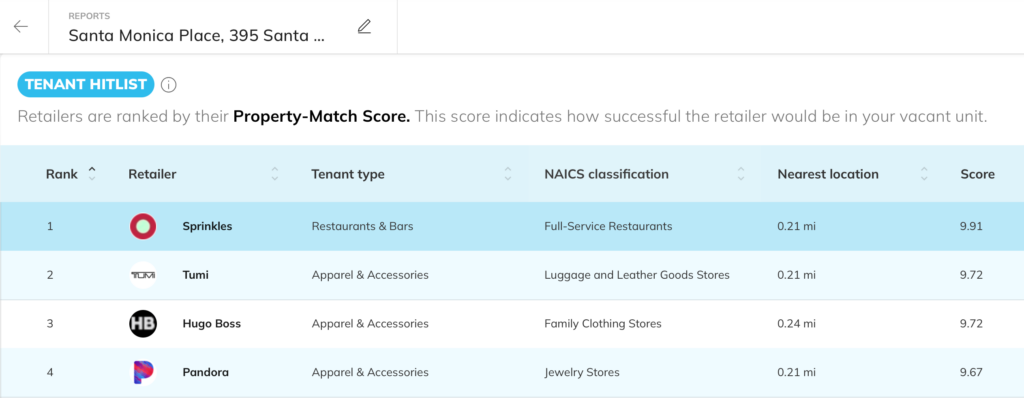No one likes to see a vacancy in a shopping mall or any commercial space. Filling them quickly is important, but so is choosing the right tenant for the best tenant mix and resolving the vacancy with as little disruption as possible.
Having a formalised marketing and leasing strategy goes a long way as these will bring in suitable tenants quickly. Filling the vacancy benefits everyone – Markters, current tenants, landlords, and mall operators can (and should!) all work together for best practice in finding tenants.
How to find tenants in retail
Attracting the right tenants is a tough process. To get businesses interested and promote your commercial space, you’ll need to have the data on side to best prepare your marketing strategy. Getting the wrong tenant will lead to underperformance and reduced ROI, so here are some ideas to fill that vacancy the right way.
1. Complete a void analysis
Finding the right tenant is crucial to prevent vacanies and ensure steady cash flow. One of the first steps should be to complete a void analysis.
Identify a gap in the market and estimate the odds of success if a brand opens a new branch in your location.
2. Rank potential tenants
Find potenial tenants and organise your approach by ranking stores. High performing brands at other local, regional and national level can be approached as potential tenants.
The key here is to target your approach with a tool that scores each brand based on the data. From there, you can go down the list with an evidence-based proposal based on performance of current tenants.

3. Promote your property online
Tenants do their research. Having a website, social media presence and photos of your location are essential to pull in interested tenants.
Implementing a marketing strategy is necessary to stand apart from the competition and get your voice out there.
After completing research on your clients, discover their social pages and follow them. Engage in the space and be active in sharing helpful and engaging content.
4. Make a brochure
Brochures aren’t just printed materials stating the size of the building, but are one of the resources tenants will look for and expect. The more information you can provide, the better! Here are some of the best things to include in your brochure:
- Details of the local area can to tenants understand the area and consumers
- High quality photos
- Details such as distance from other major cities, roads and nearby brick-and-mortar locations
- Floor plan of the layout
- Contact including a phone and email address
5. Get networking
Attending local networking and business events can help you build connections. Meeting potential tenants face-to-face gives you the chance to get to know them and vice-versa, improving trust and visibility.
Capitalize on face-to-face events by promoting your involvement on your social platforms. Follow up online to build-up relationships and discussion towards tenancy oppertunities.
6. Consider a brokerage firm
Brokers have a bigger pool of resources and time to dedicate towards your vacant tenancy. Brokers can give landlords and mall operators insights into market trends, recommended rates and the best possible tenants. These firms can do the work for you in promoting the vacancy to potential client, while checking for the tenant’s credit-score and estimated revenue.
However, you have less control over how the marketing is done and what businesses are targeted. Brokers also juggle multiple clients at once, so depending on the firm, your vacancy may not have as much attentention as you desire.
If you do use a firm, continue your efforts at a suitable scale and budget for you. This can be simply updating the information on your website and posting on your various social platforms on a regular basis.
7. Open up to other tenancy options
Is long term leasing the only option at your vacancy? Working with a landlord service to make contracts for short-term tenancy could prop up your income stream as more and more stores use pop-up shops as part of their retail marketing strategy.
Whether you’re offering long, short or a mix of contract options, working with a third-party contract service is an essential part of the procress.
8. Reach out to existing tenants
Word of mouth is powerful. Tenants you already have may be aware of businesses looking to move locations or open new branches. Current tenants are a source of information if you ask the right questions and build up a relationship over time.
9. Advertise on social media
Once you know who your prospective tenants are, the decision markers, and what platforms they’re using you can target advertising towards them. Pay to boost promotional content and target a campaign effectively.
If you are looking to increase the visibility of a property and reach a wider audience, sponsored and targeted posts are the ideal solution. By targeting specific demographics and geographic areas, you can optimise this investment to ensure you attract the perfect tenant.
You can generate a buzz around the property before it is even available to rent with sponsored content, creating a sense of competition and offering incentives such as reduced rent for signing a long-term lease.
10. Advertise in trade publications
While social media is king in this day and age, trade websites and other publications such as magazines still have a strong, specific audience. This audience is likely to be looking for a new space or will be in the near future.
See what business publications your potential tenants are already following – Business Leader, Business Matters and Real Business are common examples. You can further target your adertivising by choosing niche publications within your industry, such as fintech.
Data improves your chances
The best way to improve your chances of finding the right retail tenant is through data. There’s more data available than ever and harsnessing it can give you an edge when filling a vacancy.
The data can show where consumers are going, what they want, and who the best tenants are to meet that demand. Sign up now to our system to benefit from over 6 billion data points daily and more than 5 years of historical data.





